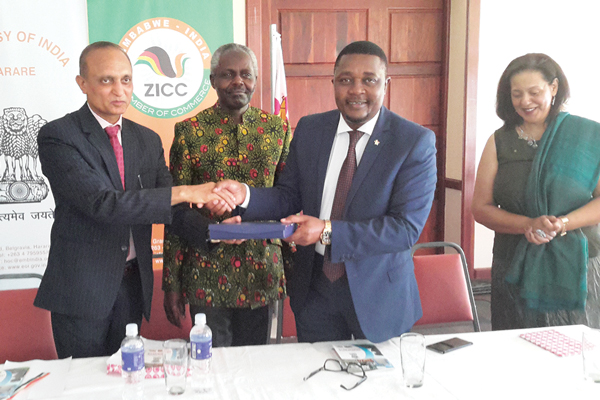
Bilateral trade between Zimbabwe and India grew by more than 200% to $132,37 million in the period 2014/15 but the country has to reduce the level of imbalance, a diplomat has said.
TATIRA ZWINOIRA
Bilateral trade between the two countries was $40 million in 2003/04.

India’s ambassador to Zimbabwe Surinder Datta told NewsDay on Tuesday at the launch of a business guide for Indian investors and foreign investors that trade between the two countries was one-way.
“But, it is only one way most of the trade is exports from India to Zimbabwe. Zimbabwe is importing a lot of things from India. Whereas, the other way round, exports from Zimbabwe is almost negligible so that imbalance has to be rectified.”
Of the total bilateral trading amount for the 2014/15 period, Indian exports were $131, 68 million while exports from Zimbabwe was about $690 000.
Datta said Indian investments into Zimbabwe were being constrained by lack of information supplied and a general unawareness of regulations in investing in the country.
“Investors have to be informed about the actual position, most of the people do not know the actual position for investment purposes. So this booklet [Zimbabwe Business Guide for 2016] explains to them what Zimbabwe expects in terms of rules and regulations,” he said.
- Chamisa under fire over US$120K donation
- Mavhunga puts DeMbare into Chibuku quarterfinals
- Pension funds bet on Cabora Bassa oilfields
- Councils defy govt fire tender directive
Keep Reading
The investment guide booklet was launched by the Zimbabwe India Chamber of Commerce (ZICC) in conjunction with the Indian Embassy as a guide for Indian and foreign investors seeking to do business in Zimbabwe.
The business guide details investment opportunities, economic indicators, business rules and regulations, and a general guide in doing business with Zimbabwe for Indian and foreign investors.
It states that on the import side, India supplies medical supplies mostly medical drugs, equipment and electrical components such as transformers, calibrating meters, and electric conductors. Also, some of the imports include manufacturing devices and general equipment supplied by India.
Another area attractive to Indian investors is the small and medium enterprise sector which has seen a boom in recent years in the country.
ZICC chairperson Pradeep Varyani said before big Indian investors can come to Zimbabwe, there must be clarity on the law.
“Indian investors want clarity in the law, if it is written in black and white they will follow it. You see, you will get a lot of individuals coming in with their small investors who would not mind shifting and changing as they go a long, but if you want the big boys, the big corporates, they want clarity,” Varayani said.
“They will send their group managers and they have a route that they follow in investment. So if the laws are unclear which say ‘come with me, I got a deal to make with you’ it will does not sound clear to them. We must not shift the goal posts as we go along.”
The total concessional credit to Africa stood at $15 billion by the end of 2015.











